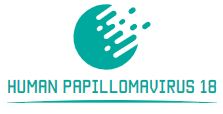Among the oncogenic genotypes of human papillomavirus (HPV), HPV18 is the second most common type detected in cervical cancer worldwide and is primarily involved in the generation of cervical adenocarcinoma. Although HPV intra-type variants confer different risks of cervical carcinogenesis, there is little information on the genetic diversity of HPV18 compared to the most prevalent type, HPV16. In this study, we investigated the genetic variation of HPV18 in cervical specimens obtained from Japanese women with normal cervices or cervical cancers and precancers.
Of the 101 HPV18-positive samples analyzed, viral whole genome amplification followed by next-generation sequencing led to the determination of viral complete genome sequences of 18 samples. Phylogenetic analysis of these HPV18 whole genome sequences identified a distinct variant cluster consisting of only Japanese samples (n = 7) belonging to sublineage A1. Viral genome sequences were also analyzed for the E6/E7 (n = 66) and E2 (n = 27) genes by Sanger sequencing.
Phylogenetic analyses of these regions showed that the variant distribution among Japanese women was strongly biased toward sublineage A1 (72 of 87; 82.8%). No significant differences were observed in the prevalence of specific sublineages between cervical cancer/precancer cases and controls, and between squamous cell carcinoma and adenocarcinoma cases. These data contribute to our understanding of the genetic diversity of HPV18 in Japanese women.
